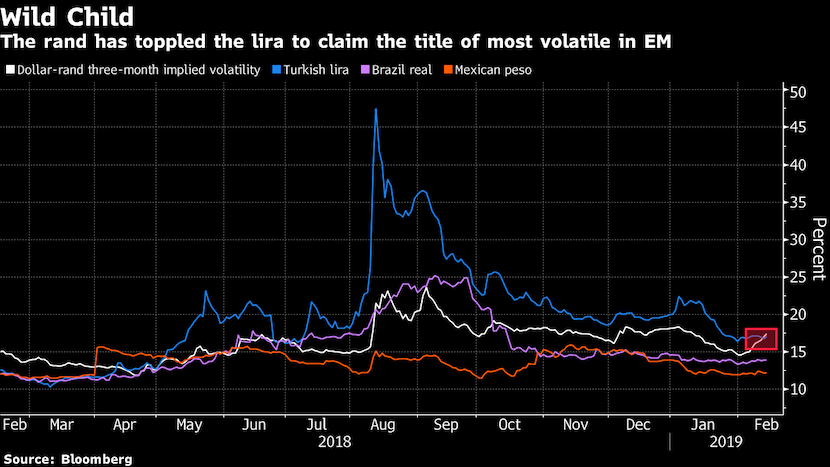EDINBURGH — The rand has become the world’s most volatile currency, with analysts putting the blame on Eskom woes. The government has outlined its broad strategy to rescue the utility giant, but has yet to unveil details, says Bloomberg. South Africa has been struggling with regular electricity cuts, with consumers and businesses in the dark for prolonged periods over many years as Eskom has slowly decayed. Gross mismanagement and corruption, particularly in the years in which Jacob Zuma was president, have been blamed for the power utility’s problems. – Jackie Cameron
(Bloomberg) – South Africa’s rand is back on its perch as the world’s most volatile currency as investors price in the risk of a credit-rating downgrade while awaiting details of the government’s rescue plan for the state-owned electricity company.
The currency fell for a second day against the dollar on Thursday to levels last seen in early January, and bond yields rose to their highest this year. The rand’s three-month implied volatility climbed for a ninth day, overtaking the Turkish lira, as traders anticipate wider price swings.
Eskom Holdings SOC Ltd. cut electricity supplies for a fifth day on Thursday, and warned its power generation system remains “ vulnerable.” President Cyril Ramaphosa said his government will outline plans to address challenges at Eskom on Thursday. The blackouts are “having a devastating impact on our economy and on the ordinary lives of people,” the president said in comments broadcast on eNCA. Moody’s has flagged the utility’s woes as credit-negative.
“We think there is more scope for a higher risk premium to be priced in the currency,” said Kiran Kowshik, a London-based emerging-market currency strategist at UniCredit Bank AG. “An increased risk of a rating downgrade should place the currency under pressure given that there is a very large foreign investors’ exposure in the local bond market.”
Unicredit recommends buying dollar-rand via two-month forwards, targeting a move to R14.75 per dollar, with a stop placed below R13.50.
The rand weakened 0.7% to R14.1561 per dollar by 11:43am in Johannesburg, adding to Wednesday’s 2.2% slump. Yields on rand-bonds due December 2026 climbed three basis points to 8.94%, the highest on a closing basis since Dec. 27.
The currency’s three-month implied volatility rose to 19.22%, the highest of about 34 currencies tracked by Bloomberg. The rand is down 6.4% in February, the worst performance among emerging-market peers.
South Africa’s benchmark stock index climbed 0.3%, advancing for a fourth day, supported by gains in shares of companies that benefit from a weaker rand.
In addition to Eskom, South African assets face a number of risks in coming months. These include the February budget, the parliamentary debate regarding constitutional changes to allow land to be expropriated without compensation, as well as the national election in May. Moody’s, the only major credit-rating company that still grades South Africa at investment level, is reviewing its rating next month.


